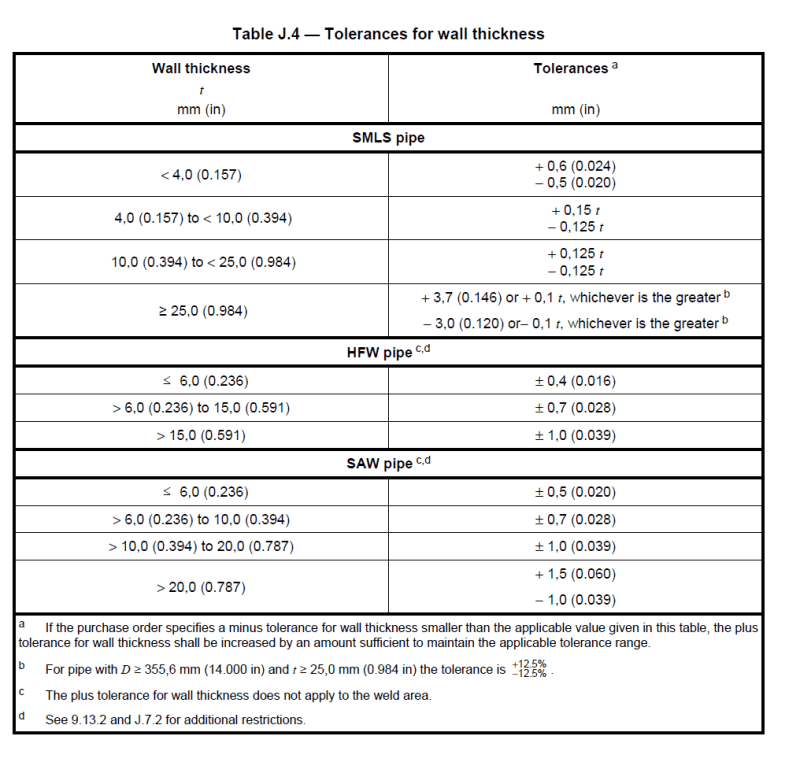APIpipeWholesaler
Materials
- Jul 26, 2012
- 24
API 45th edition calls out a wall tolerance on page 145 table J.4
it simply states
wall tolerance + - 0,7 (0.028)t
should I do a calculation here based upon my given wall to come up with a wall tolerance? If so what is the calculation?
OR
Is it my wall + or - .028
BTW my wall is .375 and pipe diameter is 16" HFW
Thanks in advance,
-=Fred=-
Vass Pipe API Line Pipe Industry Leader
it simply states
wall tolerance + - 0,7 (0.028)t
should I do a calculation here based upon my given wall to come up with a wall tolerance? If so what is the calculation?
OR
Is it my wall + or - .028
BTW my wall is .375 and pipe diameter is 16" HFW
Thanks in advance,
-=Fred=-
Vass Pipe API Line Pipe Industry Leader







